Inquire Now: Get Your Custom Mold Flipper Solution and Quotation
Handling large, heavy molds is a constant challenge in any industrial setting. I’ve seen it countless times. The traditional methods, often relying on overhead cranes and a lot of manual guidance, are slow and filled with risk. A single slip can lead to catastrophic damage to a mold that costs a fortune, or far worse, a serious injury to a valued team member. For a leader running a large-scale operation, this isn't just an operational headache; it's a significant liability that can halt production and impact the bottom line. But what if you could turn this high-risk, time-consuming process into a safe, predictable, and highly efficient one-person job? A custom mold flipper is the answer, designed to provide a secure and automated solution for turning your most critical assets.
To get your custom mold flipper solution and quotation, you can contact our engineering team directly by visiting our website at www.shjlpack.com and filling out the inquiry form. We provide a complete evaluation of your specific operational needs, including mold weight, dimensions, factory layout, and existing workflow. Based on this, we design a tailored mold flipper solution that integrates perfectly into your production line and delivers a clear, measurable return on investment.
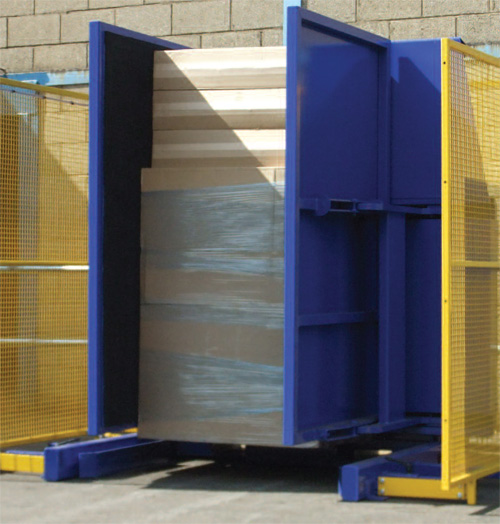
I know that making a capital investment requires more than just a price tag. You need to understand the value it brings to your entire operation. You are likely asking yourself how this machine actually improves things and if it is truly the right fit for your factory. These are the right questions to ask. I asked them myself when I was running a factory floor. Let's break down the details, so you can see precisely how a custom mold flipper is not just a piece of equipment, but a strategic tool for enhancing safety, efficiency, and profitability.
How does a mold flipper increase operational safety and efficiency?
Are you constantly worried about the risks every time a heavy mold is turned using a crane and slings? I know that feeling well. Each one of those flips is a moment of high tension. It's a complex maneuver that can go wrong in an instant, risking the safety of your team and the integrity of your expensive molds. The slow, careful process also creates a bottleneck, eating into valuable production time and directly affecting your factory's output and profit margins. A dedicated mold flipper changes all of this. It automates the entire turning process, removing the dangers of manual handling and reducing a task that took many minutes down to just one or two.
A mold flipper increases safety by mechanically securing the mold onto a stable platform and using controlled power for a smooth 90 or 180-degree rotation. This completely removes the need for precarious crane balancing and risky manual intervention. It boosts efficiency by dramatically cutting down the time and number of personnel required for the flipping process, which leads to faster mold changes, less downtime, and smoother production scheduling.
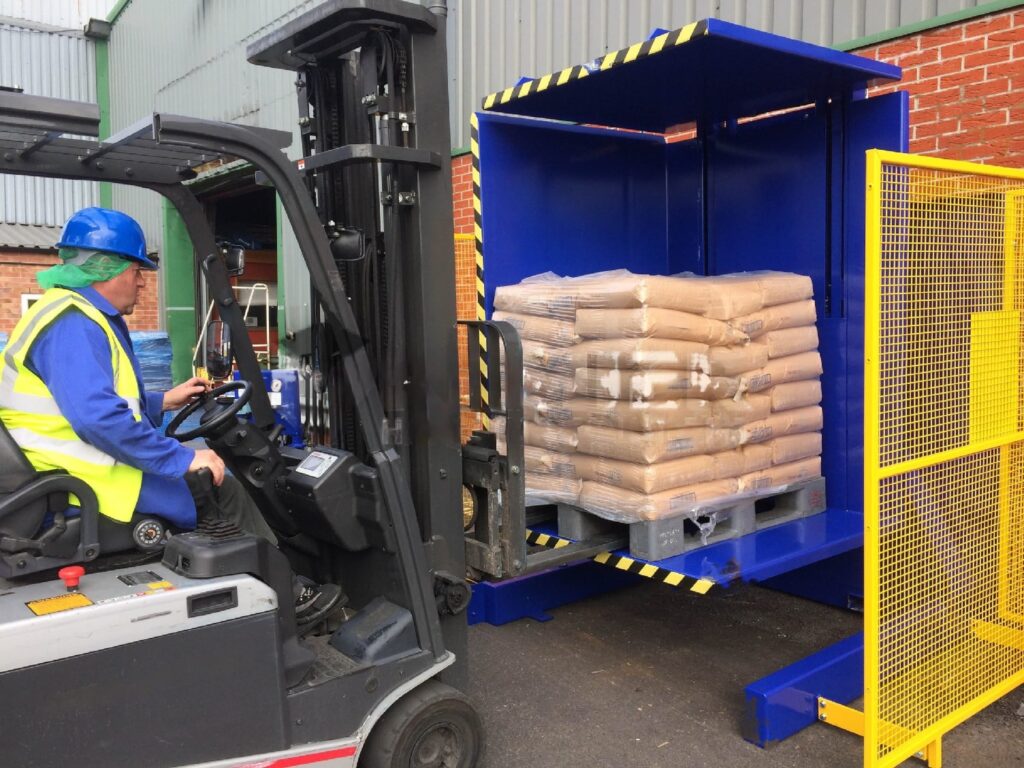
From High-Risk to Zero-Harm: The Safety Transformation
Let's think about the physics of the old method. When you use a crane, the mold is a pendulum. Its center of gravity is unstable. The slings can slip, and sudden movements can cause it to swing uncontrollably. This is a scenario where accidents are not a matter of 'if' but 'when'. I’ve personally witnessed near-misses that were frankly terrifying. A mold flipper works on a completely different principle. It cradles the mold on a wide, stable worktable. The rotation is driven by a powerful hydraulic or electric motor, but it's a slow, deliberate, and completely controlled movement. The center of gravity is managed throughout the entire cycle.
Furthermore, modern mold flippers are equipped with multiple safety features. These include robust locking mechanisms that prevent any movement during maintenance, emergency stop buttons accessible from all sides, and often safety fences or light curtains that immediately halt the machine if a person enters the operational area. This transforms a hazardous job into a routine, predictable task that complies with the highest international safety standards. It gives operators confidence and management peace of mind.
Quantifying the Efficiency Gains
Efficiency in a factory is all about time. For a leader like Javier, aiming for 95% equipment uptime, every minute saved at a potential bottleneck is critical. A manual mold flip is a sequence of slow, careful steps. A mold flipper condenses this sequence into a single, automated action. Let's compare the two processes directly.
| Task Stage | Traditional Crane Method | Mold Flipper Method |
|---|---|---|
| Preparation | Clear large area, attach slings, double-check balance | Place mold on the table with a forklift or crane |
| Personnel | 2-3 people (crane operator, spotters/riggers) | 1 person (machine operator) |
| Execution | Slow lift, careful manual rotation, gradual lowering | Push a button, machine performs controlled rotation |
| Time Taken | 15 - 45 minutes, depending on complexity | 1 - 3 minutes |
| Risk Factor | High (personnel injury, mold damage) | Very Low (automated and contained process) |
As you can see, the time savings are dramatic. If you are changing molds multiple times a day, this adds up to hours of recovered production time each week. This isn't just about doing one task faster. It means your entire mold maintenance and production changeover schedule becomes more agile. You can respond to shifting market demands more quickly because the time to switch production from one product to another is significantly reduced. This is a direct contributor to higher overall plant efficiency.
What customization options are available for a mold flipper to fit specific needs?
You may be looking at your factory floor, with its unique layout and specific types of molds, and wondering if a standard, off-the-shelf machine could possibly work. This is a very valid concern. An investment in a machine that doesn't fit your workflow is a wasted investment. It can create new problems, require expensive changes to your facility, or simply fail to handle your molds correctly. This is a scenario I have helped many clients avoid.
At SHJLPACK, we operate on the principle that a "custom fit" should be the standard. We design every mold flipper based on your unique operational requirements to ensure it is the perfect solution for you. Key customization options include the load capacity, which can range from 1 ton to over 100 tons; the size and shape of the worktable to match your molds; the precise tilting angle, typically 90 or 180 degrees; the power system, either electric or hydraulic; and various integration features, such as conveyor systems or advanced PLC controls that can communicate with your factory's main management system.
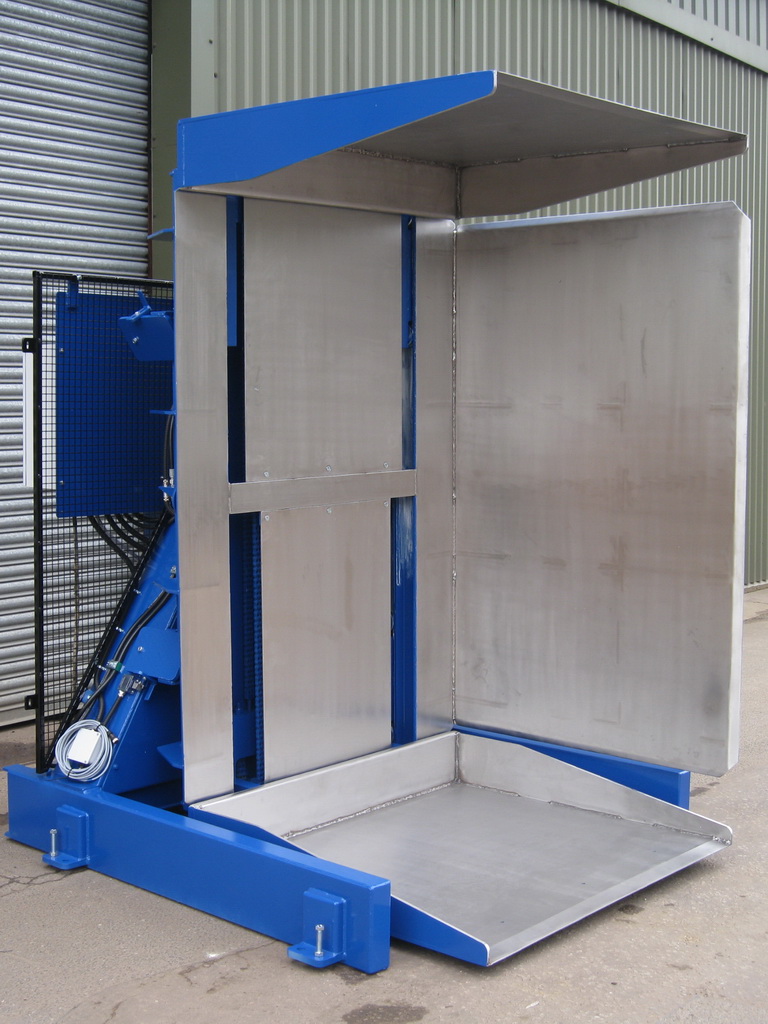
Sizing It Up: Capacity, Dimensions, and Power
The first step in our process is a deep dive into your needs. It's not just about the maximum weight of your molds. We consider the dimensions, the center of gravity, and the material. This analysis informs the three core aspects of the design.
- Load Capacity: We don't just build a machine that can lift your heaviest mold. We build it with a significant safety factor. This ensures structural integrity and long-term reliability, even under continuous, heavy use. For a steel mill environment, this means using high-strength steel for the frame and components that are built to withstand a demanding environment.
- Table and Structure: The worktable can be flat, V-shaped, or have custom fixtures to hold unusually shaped molds securely. We use 3D modeling to simulate how your mold will sit and rotate, ensuring there are no interference points. The machine's footprint is also designed to fit within your available space, minimizing disruption to existing workflows.
- Power System: The choice between a hydraulic and an electric drive system depends on your specific needs. Hydraulic systems offer immense power for very heavy loads and are known for their durability. Electric systems, on the other hand, offer precise control, lower energy consumption during idle times, and are cleaner, with no risk of oil leaks. For a leader focused on reducing energy costs, like Javier, we can analyze the duty cycle and recommend the most energy-efficient option. We often use variable frequency drives (VFDs) on our electric models to ensure smooth acceleration and deceleration, which is crucial for protecting sensitive molds.
Integration and Digitalization
A modern machine should not be an island. It must be able to communicate with the rest of your factory. This is where we go beyond basic customization. We understand the goal of a digital factory, and our mold flippers are designed to be part of that vision.
| Customization Category | Available Options & Benefits |
|---|---|
| Control System | Simple push-button controls for basic operation. Or, a full PLC system with an HMI (Human-Machine Interface) touch screen for diagnostics, maintenance alerts, and cycle tracking. |
| Automation | We can integrate powered roller or chain conveyors onto the worktable. This allows the mold flipper to be part of a fully automated production line, where molds are moved in and out without any manual forklift intervention. |
| Data & Connectivity | The PLC can be configured to connect to your plant's MES (Manufacturing Execution System) or SCADA system. It can send data on cycle times, machine status, and fault codes. This data is essential for predictive maintenance and for achieving the kind of total production visualization that leaders like Javier are aiming for. |
| Safety Systems | Beyond standard E-stops, we can add safety light curtains, pressure-sensitive mats, or area scanners. These advanced systems create an intelligent safety zone around the machine, ensuring the highest level of protection for your personnel. |
When I started my journey in this industry, machines were simple. Now, they must be intelligent. This level of customization ensures that the mold flipper you invest in is not just a solution for today, but a building block for the smart factory of tomorrow.
How is the ROI calculated for a mold flipper investment?
As a business owner, I know that every dollar spent on new equipment must be justified. You need to see a clear path to getting that money back and then some. You have to answer the question: "Will this machine pay for itself, and how quickly?" Simply hoping for a good outcome isn't a strategy. Without a clear Return on Investment (ROI) calculation, you risk passing up a valuable opportunity or, worse, investing capital in equipment that doesn't deliver the financial results you need.
The ROI for a mold flipper is calculated by dividing the net financial gain from the machine by the total cost of the investment. The financial gains come from several areas: direct cost savings from reduced labor hours and the elimination of mold damage and accident-related expenses. It also includes powerful indirect gains from increased production uptime, which directly boosts your factory's capacity and overall efficiency.
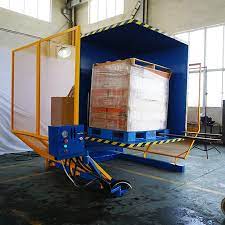
The 'Investment' Side: Total Cost of Ownership
To get a true ROI, we must first be honest about the total cost. It's more than just the purchase price. A credible supplier will help you understand the Total Cost of Ownership (TCO).
- Initial Purchase Price: This is the cost of the custom-designed machine itself.
- Installation & Commissioning: This includes the cost of shipping, site preparation (like a concrete pad if needed), and the labor to get the machine running and tested. We provide clear guidelines to make this process smooth and predictable.
- Training: The cost of training your operators and maintenance staff. A well-trained team is essential for safety and long-term reliability.
- Ongoing Costs: This includes projected energy consumption and a budget for routine maintenance and spare parts. Because we use high-quality, standard components from brands like Siemens or Schneider, maintenance is straightforward and parts are readily available, keeping these costs low.
The 'Return' Side: Calculating Your Gains
This is where the investment starts to pay you back. We can break the returns into tangible, calculable savings that will appear on your balance sheet.
| Savings Category | How to Calculate It | Example for a Steel Mill |
|---|---|---|
| Labor Savings | (Hours Saved per Flip) x (Flips per Day) x (Working Days per Year) x (Avg. Hourly Labor Rate with Benefits) | (0.5 hours saved) x (4 flips/day) x (250 days/year) x ($30/hour) = $15,000 per year |
| Damage Reduction | (Avg. Cost of Mold Repair) x (Estimated Reduction in Damage Incidents per Year) | ($10,000/repair) x (1 fewer incident/year) = $10,000 per year |
| Safety & Insurance | (Avg. Cost of a Lost-Time Injury) + (Potential Reduction in Insurance Premiums) | A single serious injury can cost well over $50,000. Preventing just one is a massive return. |
| Uptime Value | (Extra Production Hours Gained per Year) x (Value of Production per Hour) | (500 hours saved/year) x ($500/hour in production value) = $250,000 per year |
When you present these numbers, the financial case becomes very clear. I once worked with a client who was hesitant about the initial cost. After we sat down and ran these numbers using his own data, he saw that the machine would pay for itself in just 14 months. For a pragmatic leader like Javier, whose goal is an 8% reduction in operational costs, these direct savings in labor, repairs, and uptime are the key to hitting that target.
What does the "total solution" from SHJLPACK include for a mold flipper?
Have you ever purchased a piece of equipment only to feel abandoned by the supplier after the sale? The machine arrives, but the support doesn't. This leaves your team struggling with installation, trying to solve integration problems on their own, and facing long delays for service or parts. For a busy executive, managing these supplier failures is a huge drain on time and a source of constant frustration. It turns a potential asset into a long-term problem.
Our slogan, "TOTAL SOLUTION FOR WRAPPING MACHINE," is the core of our philosophy. At SHJLPACK, we believe the machine itself is just one part of a lasting partnership. Our "total solution" for a mold flipper is a complete, end-to-end process. It begins with an in-depth consultation and custom engineering design. It continues through manufacturing and rigorous quality control. It includes full support for installation and operator training. And it extends for the life of the machine with responsive after-sales service, maintenance guidance, and a reliable supply of spare parts.
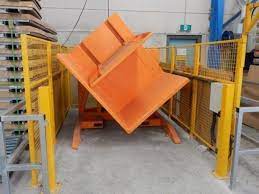
Stage 1: The Foundation - Consultation and Design
This is where our partnership begins. We don't start by showing you a catalog. We start by listening. We want to understand your challenges—whether it's aging equipment, cost pressures, or safety concerns. We'll analyze your current workflow, your mold types, and your factory layout. Then, our engineers get to work. We use advanced 3D CAD software to create a virtual model of your custom mold flipper. You get to see exactly how it will look, fit, and operate in your space before we even cut the first piece of steel. This collaborative process ensures there are no surprises. It guarantees that the machine we build is the machine you need.
Stage 2: The Build - Quality and Transparency
When I started my own factory, I learned that cutting corners on materials or components is a recipe for failure. That lesson is built into every machine we make.
- Materials: We use certified, high-strength steel for all structural components, ensuring the machine can withstand the rigors of a heavy industrial environment like a steel mill.
- Components: We source our critical components—motors, hydraulics, electrical systems—from world-renowned, reliable brands like Siemens, Schneider, and Parker. This doesn't just guarantee performance; it means that if you ever need a replacement part, it's easily accessible anywhere in the world.
- Manufacturing: Our fabrication and assembly processes are governed by strict quality control standards. We conduct rigorous testing on every machine before it leaves our factory, including load testing and a full functional check of all systems.
Stage 3: The Partnership - Support for Life
Our responsibility does not end when the machine ships. In many ways, it's just beginning.
- Installation & Training: We provide extremely detailed documentation, including installation manuals, electrical schematics, and operating procedures. We also offer remote video support to guide your team through the process. For complex installations, we can dispatch our own engineers to your site to oversee commissioning and provide hands-on training for your operators and maintenance staff.
- After-Sales Support: When you call us with a question or a problem, you are a priority. My promise is that we will be the responsive, reliable partner I wished I had when I was starting out. We are dedicated to ensuring your equipment runs smoothly for years to come, providing technical advice and shipping spare parts quickly to minimize any potential downtime. This is what a "total solution" really means. It's a commitment to your success.
Conclusion
A custom mold flipper is more than just a machine; it's a strategic investment in the safety, efficiency, and future growth of your operation. Let's work together to build your solution.




